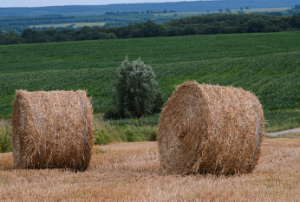Baling twine comes in various colours, depending on the material being baled and the machine it will be used on. Black is the most durable colour and is popular in climates with high solar radiation. A slit-film twine with higher elongation is an option if you use a baler to produce pressed fodder. Alternatively, you can choose a different material entirely.
 If you plan to recycle baling twine, you must be careful when separating it. This natural fibre is easily snagged on things or blown away. To prevent this, you should place the twine in a cardboard box, strong plastic bag or bin. Some towns also have baling twine recycling programs and drop-off sites. It can also be disposed of in landfills. For more information, check out the following link. For more details, click to read more.
If you plan to recycle baling twine, you must be careful when separating it. This natural fibre is easily snagged on things or blown away. To prevent this, you should place the twine in a cardboard box, strong plastic bag or bin. Some towns also have baling twine recycling programs and drop-off sites. It can also be disposed of in landfills. For more information, check out the following link. For more details, click to read more.
Natural fibre
Sisal, a natural fibre used to make baling twine, is an excellent choice. This twine is durable, strong, and select-grade Brazilian agave sisalana fibres. Additionally, the environmentally friendly material is biodegradable. So, while you might be wondering about its ecological impact, rest assured that this fibre is safe for use. The strands of natural fibres in this baler twine have been treated to prevent mildew and rot while providing excellent durability.
Sisal is a biodegradable, knot-free natural fibre. It’s 100% natural and is the perfect alternative to synthetic fibres. Because sisal twine is biodegradable and digestible, it is ideal for use in baler machinery. It has been treated to repel rodents and is naturally resistant to rot and mildew. Sisal twine can be used with square balers.
Biodegradable sisal has numerous advantages. It is biodegradable, resistant to insects and vermin, and has high tensile strength, making it an ideal choice for baling large hay or other materials. Polypropylene has also helped to revolutionise the industry, and many manufactured plastics are used today in baler twine. Unlike sisal, polypropylene has high durability and is resistant to the elements.
Cost
The cost of baling twine varies widely depending on the twine type. For example, solar-degradable twine costs about 50 cents per bale and lasts much longer than standard twine. However, the additional cost of solar-degradable twine is more than offset by the time saved in wrapping bales. The following are the main factors to consider when determining the cost of baling twine. For more details, click to read more.
The twine used for baling straw is usually high-density. High-density twine is ideal for stationary balers because it requires more knots per bale. The twine is UV-protected and also has a uniform thickness. Therefore, it can be used for both hay and straw baling. If you’re unsure of the twine type to buy, you can also check the spool size specifications of various twines to compare prices.
Sisal twine, on the other hand, is biodegradable. It is available in a variety of colours and grades. Unlike plastic twine and net wrap, sisal twine will not clog balers or affect the decomposition of the bale. There are two main types of sisal twine: HD and large square twine. The latter is much cheaper than the former. Solar-degradable twine is environmentally-friendly, has a high knot strength, and can be purchased for less than 50 cents a bale.
Disposal
Baling twine is abundant. Unfortunately, proper disposal is complex and can be expensive. Luckily, there are ways to dispose of used twine, such as recycling. The Morgan Conservation District has teamed up with local organisations, including the Colorado Department of Public Health and Environment, the Morgan County 4-H Exchange, and the Fort Morgan FFA, to develop a twine recycling program. In addition to collecting and sorting baling twine, local organisations collect and repurpose it for reuse.
The first step in recycling baling twine is to bring it to a local recycling facility. Many recycling plants use environmentally-friendly processes that will make the baling twine usable again. This program also benefits the rest of the industry. Farmers turn over their used baling twine to these factories, and factories recycle it into new products. In turn, other industries will follow suit. To learn more about baling twine recycling, visit the website below.